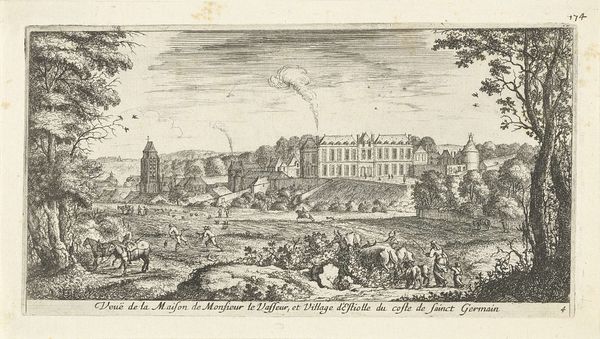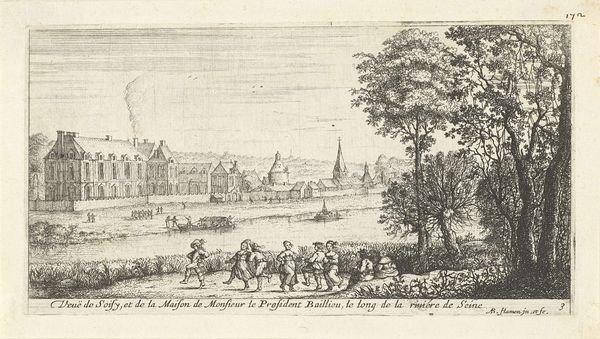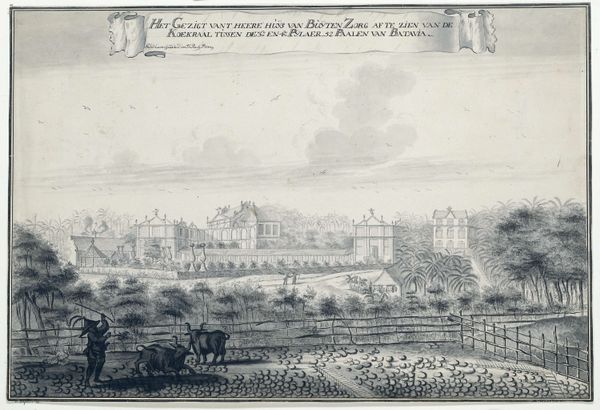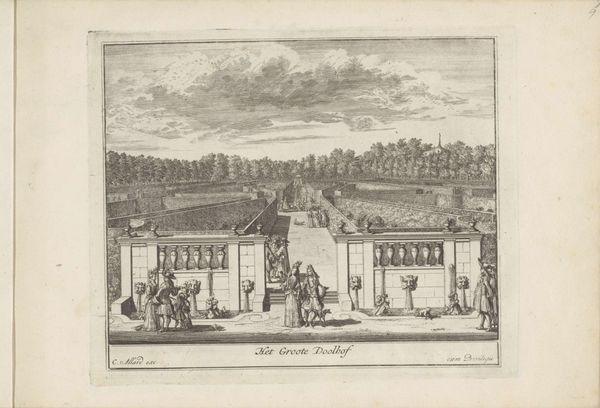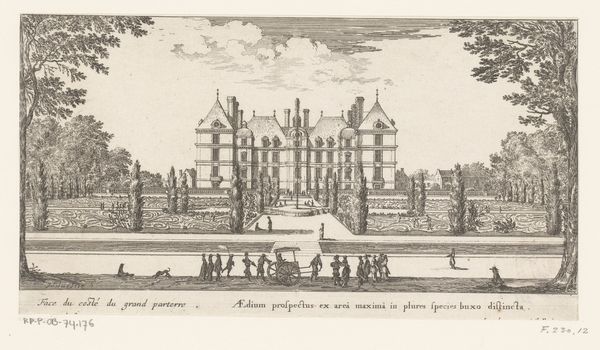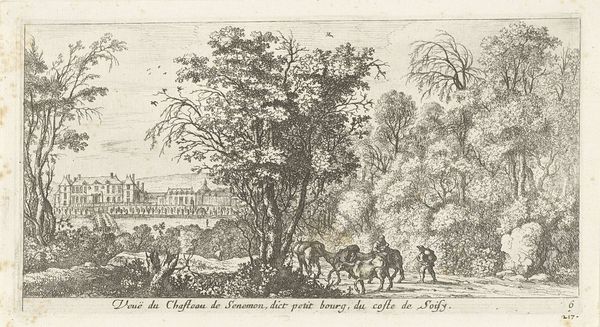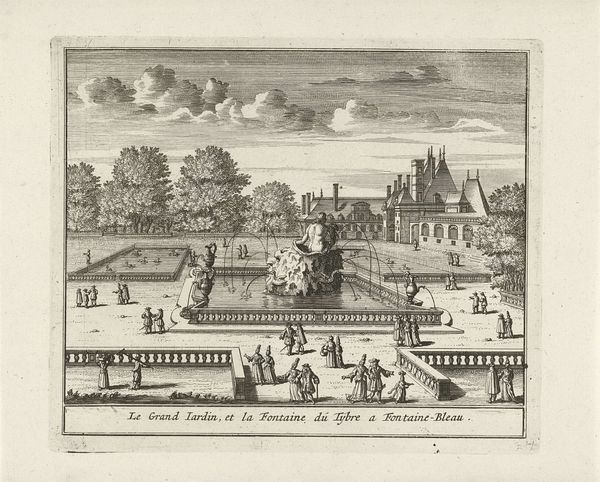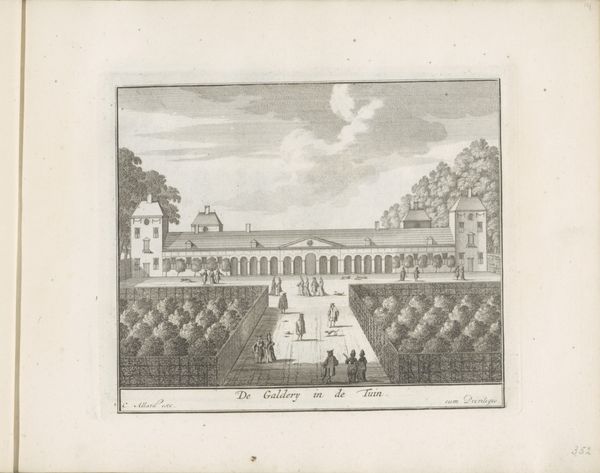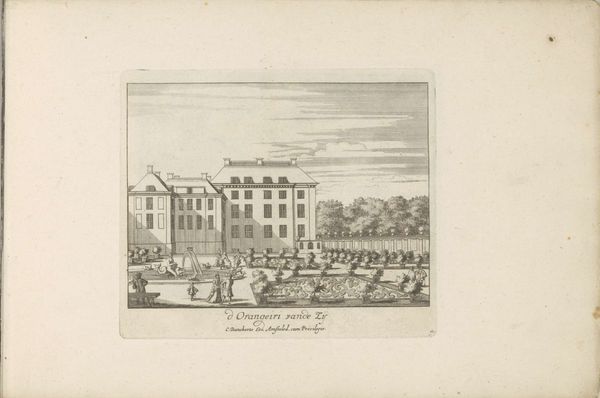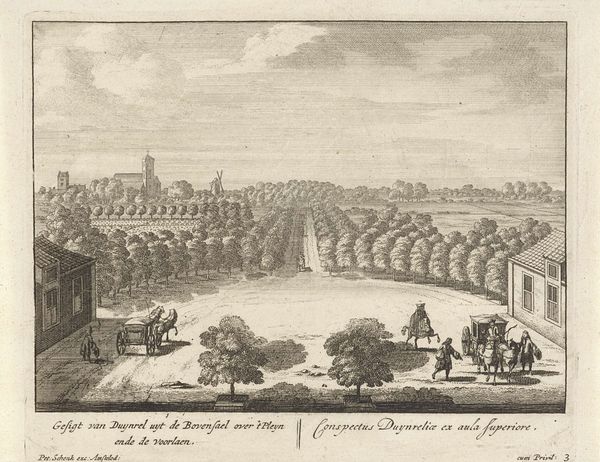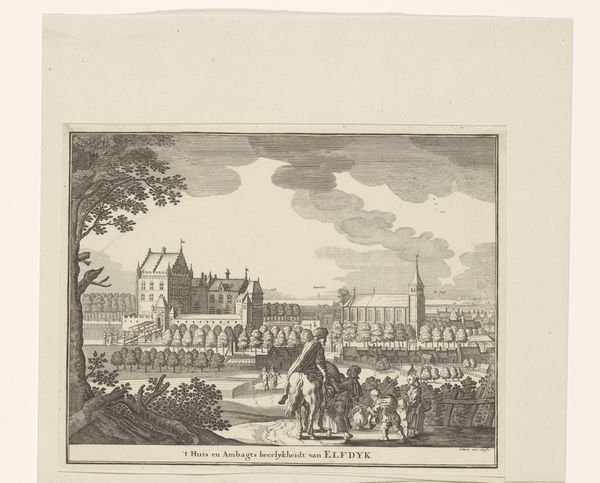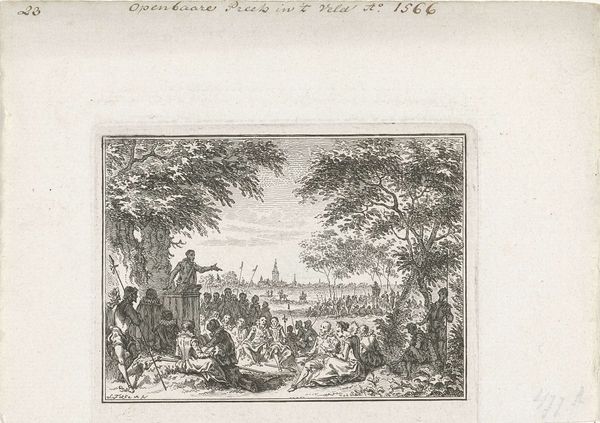
Dimensions: height 90 mm, width 105 mm
Copyright: Rijks Museum: Open Domain
Curator: Here we have "The Entry of the Count of Leicester into The Hague, 1586," a print made between 1782 and 1784. Simon Fokke is credited as the artist. Editor: It's captivating! The dense activity in the foreground immediately draws you in, all leading toward a grand building. There's almost a celebratory air despite its small scale. Curator: It depicts Robert Dudley, the Earl of Leicester, arriving in The Hague to serve as governor-general of the Netherlands. This moment symbolizes a complex power dynamic: the Dutch seeking foreign aid against Spanish rule, with all the class implications of asking for the aristocracy for help to defend democracy. Editor: I find myself drawn to the architectural details and the way the arches frame the procession. The contrast between the heavy, ornamented arches and the more delicate rendering of the people—it feels very crafted, emphasizing a deliberate social arrangement, with an attempt to merge art and design of the celebration into one. The pen and engraving gives that feeling. Curator: Exactly. The medium lends itself well to propagating political messages to a wide audience. It speaks volumes about the social context that shaped Fokke's craft. Consider how printmaking was utilized at this time—allowing ideals and depictions to spread in ways never before available, effectively turning artistry into a form of activism. Editor: Yes, printmaking democratized image-making in a way, challenging who has access and who could make art. I wonder how Fokke viewed this moment almost 200 years later. Was it nostalgia for aristocratic order or commentary? Curator: A vital question! We need to situate the work within its era of production—a period ripe with its own political anxieties. And in so doing we are also reminded of how gendered and racialized politics permeate this moment, a historical narrative that is rarely considered from all standpoints, the Count being seen as a masculine figure coming in on his horse in front of what I take is all men? What were the views of women? What would colonized Dutch workers have felt about this arrival of British aid and leadership? Editor: It does speak to the enduring power of visual culture to shape perception. Looking again, the labor involved in the engraving mimics the physical labor needed to sustain such a display of power in The Hague. The image both idealizes and, unintentionally perhaps, hints at the mechanisms propping up authority. Curator: Indeed. By analyzing the engraving within its own historical milieu, alongside contemporary theoretical lenses, it unveils layered sociopolitical dynamics concerning class, identity, and historical representation itself. Editor: The experience gives an opportunity to contemplate the tangible effort behind even seemingly straightforward historical records. Thank you for these valuable insights.
Comments
No comments
Be the first to comment and join the conversation on the ultimate creative platform.
